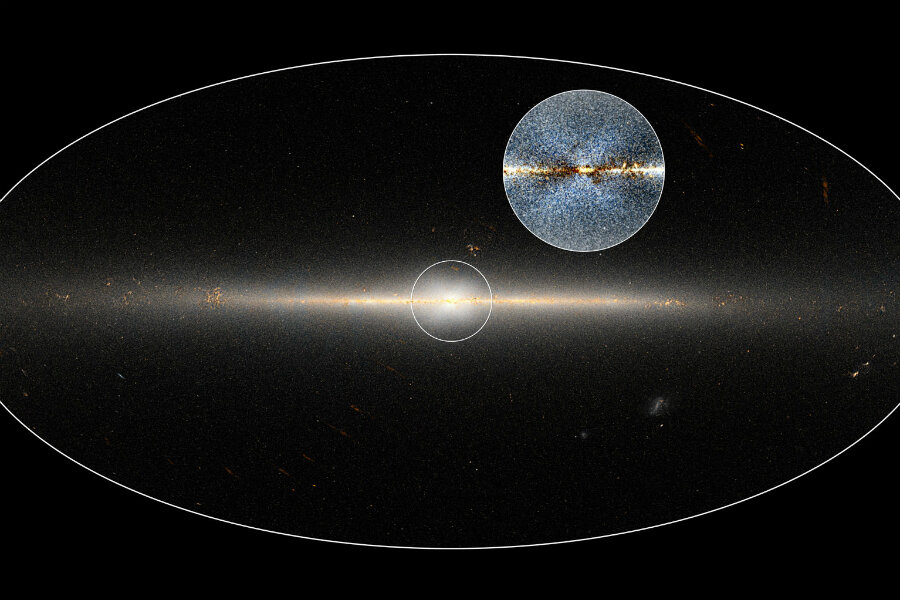How Twitter revealed something about the origins of our galaxy
Loading...
You won’t find caramel at the center of this Milky Way. Instead, you’ll have to settle for a massive 'X' of stars.
After Twitter users pointed out the formation in a NASA photo, researchers were able to confirm the existence of an X-shaped star bulge at the heart of the Milky Way galaxy. According to a new study, which was published in The Astronomical Journal, the bulge could provide new insights into galaxy formation.
“The bulge is a key signature of formation of the Milky Way,” co-author Melissa Ness, a postdoctoral researcher at the Max Planck Institute for Astronomy, said in a press release. “If we understand the bulge we will understand the key processes that have formed and shaped our galaxy.”
It all began in 2015 when Dustin Lang, a University of Toronto astronomer, tweeted an image from NASA’s Wide-field Infrared Survey Explorer (WISE). The spacecraft, which was launched in 2009 and decommissioned two years later, has produced a number of breathtaking infrared images, most of which have been made publicly available by NASA.
“The WISE team should be applauded for making that high-quality public data release,” says Dr. Lang in an email to The Christian Science Monitor. “It has enabled science that was not envisioned by the WISE team… releasing data increases the value of the mission.”
Lang, who specializes in the analysis of astronomical images, was using data from WISE to develop an interactive map of distant outer galaxies. But his followers noticed something surprising in our own celestial neighborhood – a subtle ‘X’ in the center of the Milky Way.
There are three types of galaxies in the known universe: elliptical, spiral, and irregular galaxies. The Milky Way is a spiral galaxy, a rotating disk of gas, dust, and stars. As spiral galaxy grows and collects mass, a boxy “stellar bar” of orbiting stars can form at its center. This bar can become unstable over time, crumpling inward and creating a bulge.
“We see the boxy shape, and the X within it, clearly in the WISE image, which demonstrates that internal formation processes have driven the bulge formation,” Dr. Ness said. “This also reinforces the idea that our galaxy has led a fairly quiet life, without major merging events since the bulge was formed, as this shape would have been disrupted if we had any major interactions with other galaxies.”
Previous studies have identified the bulge – a 3D rendering of the Milky Way, produced by the Max Planck Institute for Extraterrestrial Physics in 2013, even got the shape right – but this is the first known photo of the structure.
Social media and science don’t always work in such synergy. But platforms like Twitter are proving increasingly valuable in certain lines of research.
“This is the first scientifically interesting result that I have seen from tweeting my WISE images,” admits Lang, “[but] a lot of scientists use social media specifically as a way of communicating their science to the wider public.”
The constant scroll of user data has proved useful in studies where data was hard to obtain. An app created in Singapore, for example, combs through selfies to estimate air pollution – an alternative to expensive sensors. In March, conservation biologists combed social media sites to survey the trade of rare, endangered orchid plants.
“The public content of most social media platforms can be accessed via ready-made application programming interfaces,” Henrikki Tenkanen, a PhD student in geoinformatics at the University of Helsinki, said in a press release last year. “In addition to the text and images, the posts often have coordinates and a timestamp that can be used in analyses.”






